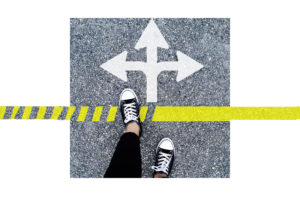One of the most important decisions a teacher makes, will affect the entire school year.
Teachers know they must decide how to get their students’ attention. The most effective teachers are able to get every student’s attention at the same time. Some use the same cue every year, others mix it up. Every teacher has one. Not all of them work.
Why does the exact same classroom cue work in one classroom and not another?
The power of the classroom cue lies in how well the teacher has implemented the following five steps.
1. Select a Visual Cue and an Auditory Cue
Simply put, a cue is something said or done that prompts an action. Identify both an auditory cue, such as a call and response, and a visual cue, such as a raised hand, to get your students’ attention. Different learning situations require different cues.
Make sure you are comfortable with the cues you select, as they should be a natural extension of your teaching style.
2. Be Clear About the Purpose of a Classroom Cue
In most cases, getting students quiet is the means to the end, not the end itself. The purpose of creating a classroom cue is to get students’ attention so that you can 1) deliver information or 2) provide instructions.
3. Name the Cue & Explain the Cue
Once you have selected a visual and an auditory cue, and you understand their purpose, give each of the cues a name. Provide the name and explain the purpose of the classroom cues to the students. Model what each of the cues looks like and sounds like.
Do not assume that students naturally understand your class cue and how to respond.
4. Set the Expectation & Require Compliance
Set the expectation regarding the students’ response. Explain to the students the action you want them to take when you give the cue. For example, “When I give the cue, stop what you are doing and look at me.”
Students should respond to the cue within 3-5 seconds. Wait for compliance and do not talk over students. Talking over students sets a precedent that you are not serious about your expectations or the 3-5 seconds.
5. Practice! Practice! Practice!
This step is the most critical to success. Practice the cue until all students respond according to your expectation and within 3-5 seconds. The goal of practice is to form a habit that elicits a reflex-type of response. Students hear or see a cue, and automatically respond with little cognitive effort. Time spent reinforcing the cue is well worth it.
Effective use of classroom cues will make any classroom more efficient. Whichever classroom cue you choose, make sure you implement the five steps.
What are your favorite classroom cues? Leave a comment below.




